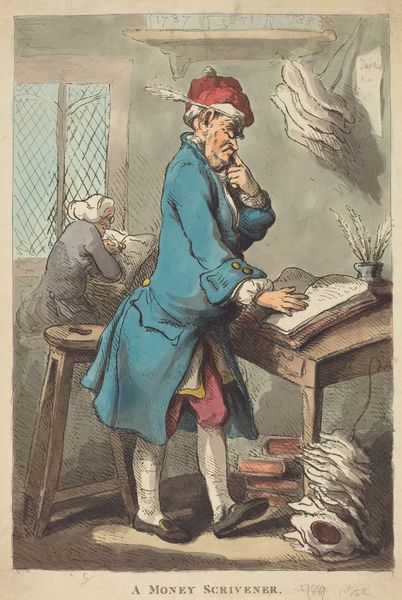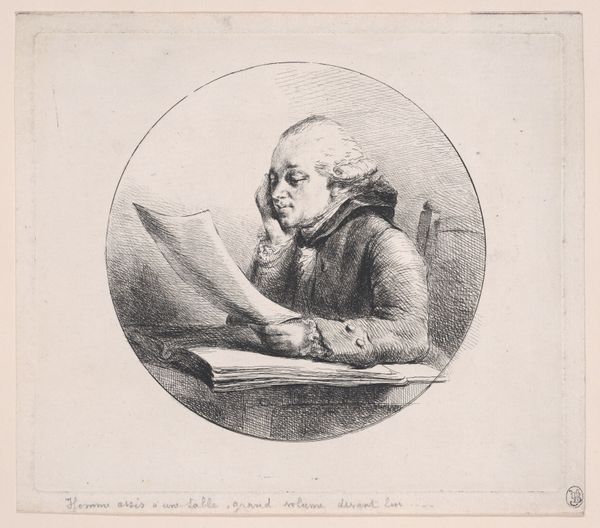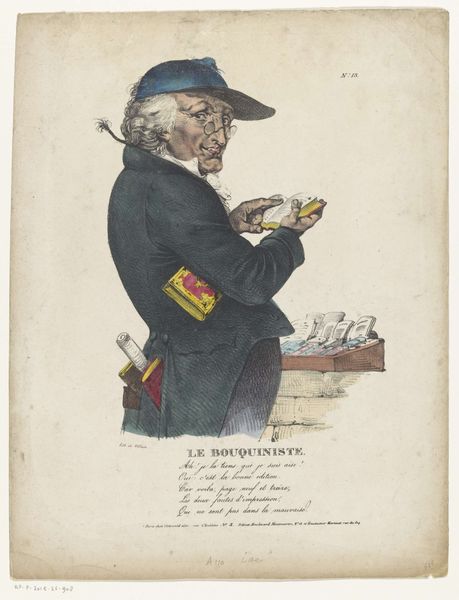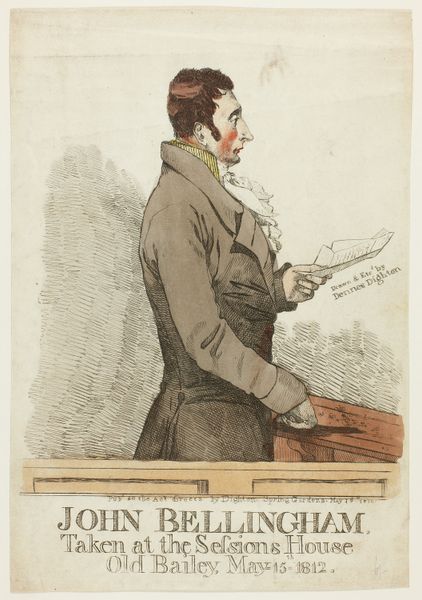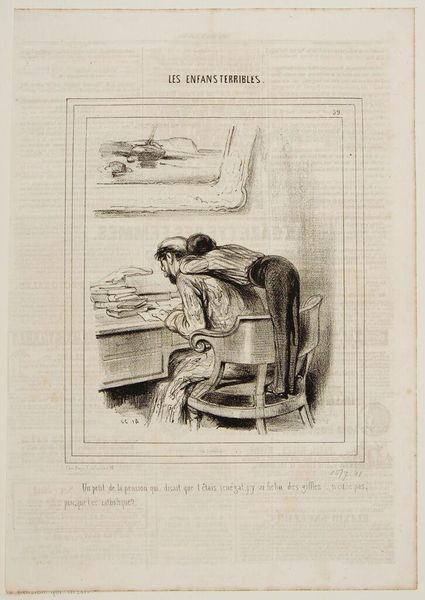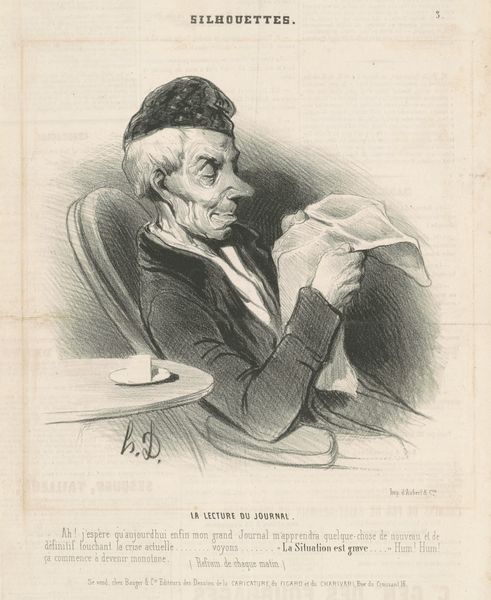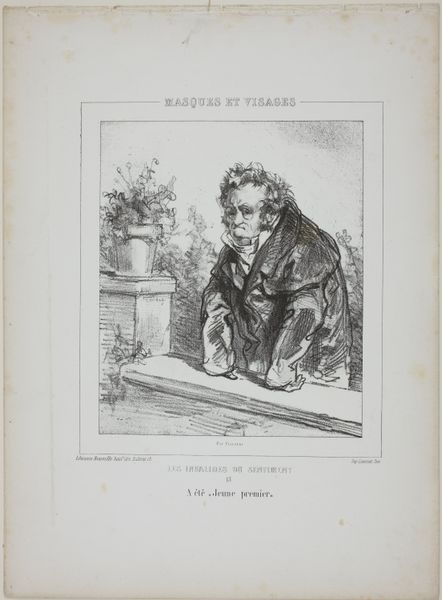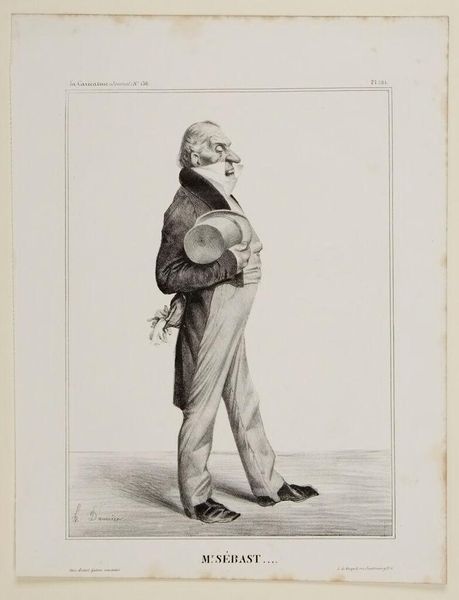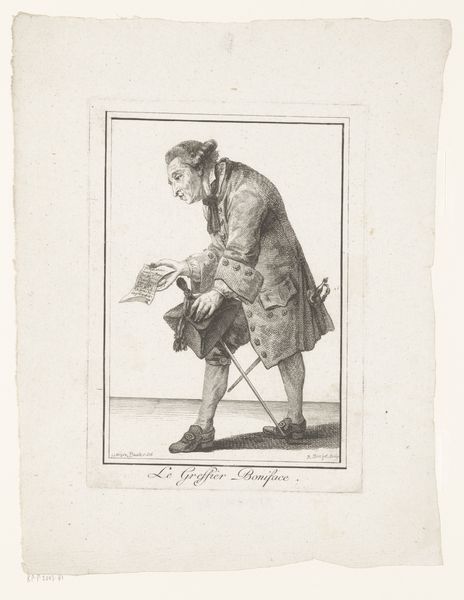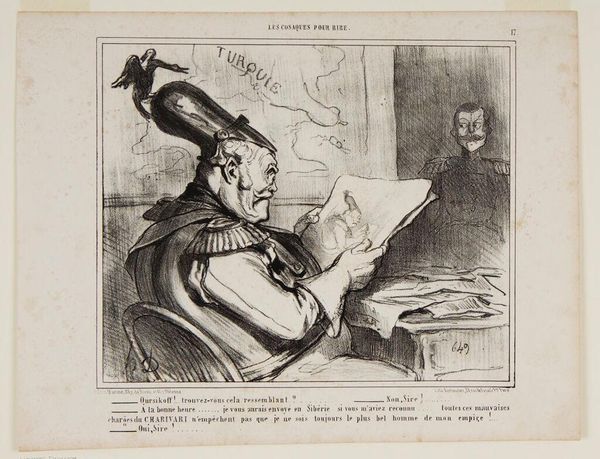
Musiciens de la chapelle: l'abbé loup c. 19th century
0:00
0:00
Copyright: CC0 1.0
Editor: Here we have "Musiciens de la chapelle: l'abbé loup" by Charles Joseph Traviès de Villers. It's a caricature, and the musician seems so…disengaged. What can you tell me about the public role of this kind of imagery? Curator: This caricature reflects the socio-political landscape of 19th-century France. Caricatures like this served as social commentary. Note how the artist exaggerates the features. Does this suggest a critique of the church, perhaps? Editor: It definitely seems mocking, but was there a specific political message? Curator: Possibly. Caricatures often targeted specific figures or institutions to sway public opinion. Understanding the context of the chapel and the "abbé loup" would unlock deeper meanings related to institutional power. Editor: So, it's less about the music itself, and more about what it represents in society? Curator: Precisely. The humor becomes a tool for social critique. I wonder, how do you think contemporary political cartoons function similarly? Editor: It's fascinating to see how art becomes a form of political discourse! Thanks for that perspective.
Comments
No comments
Be the first to comment and join the conversation on the ultimate creative platform.

